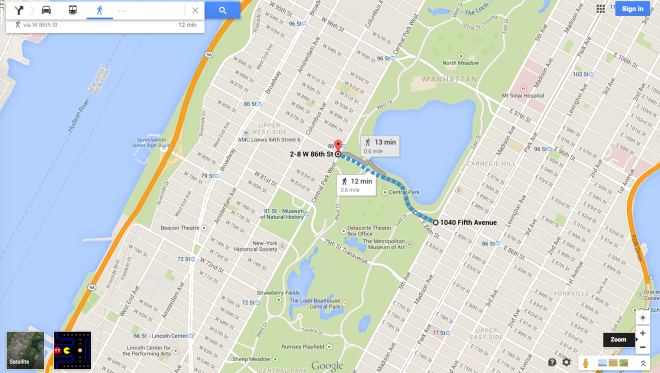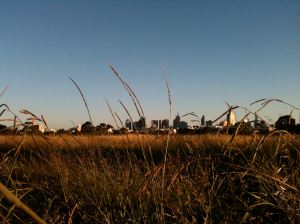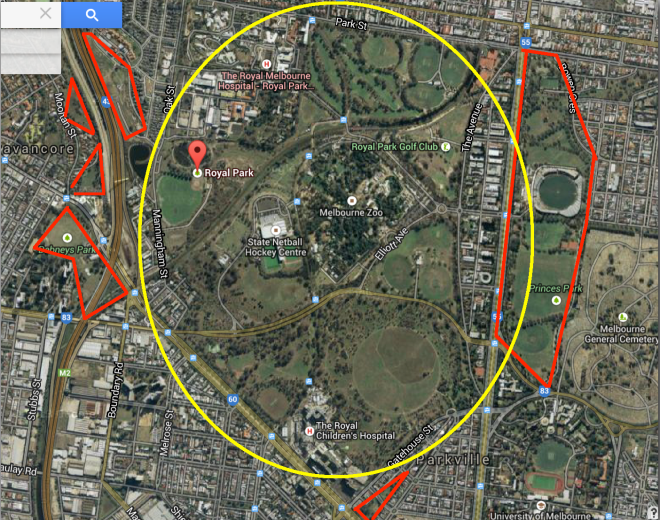Melbourne has too much parkland and we should build apartments where there are currently trees.
I am serious. But I am also going to add nuance to that statement…
People who care about cities agree surface carparks are bad. They are dead empty spaces that reduce density. They ruin walkability and limit the agglomeration effects you can get when businesses locate in close proximity.
Many of these same people gush about parks and would chain themselves to trees if I were put in charge.
But there are parks that operate just like carparks. They’re eerie, bleak and deserted. They add to walking distances between destinations. They’re antithetical to the basic function of a city, which is to put humans into contact with each other.
Not all parks are like this. Some are popular destinations in their own right. They are busy and valuable. But others are black holes in the universe of our city.
The biggest example of such a bad park sits right at the centre of Melbourne. Royal Park. It is clearly too big and as a result, it is largely empty.
When we compare the scale of Royal Park to another very large, famous inner city park, we can see that it is around 50 per cent wider.


Royal Park and would take 17 minutes to cross on foot. It would take 8.5 minutes just to walk to the middle of the park, assuming you start from the very edge. If you lived 3 minutes from the park and planned to walk into the middle of the park, then home again, that will require at least 23 minutes of solid walking.
While we’re talking about New York City, it is probably worth quoting history’s most famous urbanist, New York’s Jane Jacobs. (Economics readers who haven’t heard of her can think of her as a sort of Adam Smith of urbanism.)
“In orthodox city planning, neighborhood open spaces are venerated in an amazingly uncritical fashion, much as savages venerate magical fetishes. Ask a houser how his planned neighborhood improves on the old city and he will cite, as a self-evident virtue, More Open Space. Ask a zoner about the improvements in progressive codes and he will cite, again as a self-evident virtue, their incentives toward leaving More Open Space. Walk with a planner through a dispirited neighborhood and though it be already scabby with deserted parks and tired landscaping festooned with an old Kleenex, he will envision a future of More Open Space.
“More Open Space for what? For muggings? For bleak vacuums between buildings? Or for ordinary people to use and enjoy? But people do not use city open space just because it is there and because city planners wish they would.”
Parks are an asset to a city. We can appreciate them by looking out on them. We can appreciate them by simply knowing they are there. But mainly we appreciate them by being in them. That’s their primary function.
An empty park is a failed park. These are not like National Parks, designed to preserve an eco-system for eternity. Royal Park is described by its defenders as bushland, but I’ve been to the bush and it isn’t. The modest scattering of trees were probably planted to hide how empty the place is. But it just makes the park more vacant seeming and less useful.
Central city parks should function for people. Design is part of that. Lighting is important. So is seating.
But the most significant determinant of how people use parks is proximity. Central Park has literally millions of people within walking distance. The shape of the park optimises the amount of people nearby – it is long and thin.
By contrast, Royal Park is almost round.
Furthermore, Royal Park is surrounded by other parks! (I’ve marked them in red).
A good park – a necessary park – is surrounded by people who crave access to parkland. Royal Park fails on this criteria.
The only times I’ve ever gone to Royal Park by foot, for reasons other than organised sport, has been in the company of people living in that small, highly-desirable sliver of Parkville on Royal Park’s east. By contrast, I’ve spent many many hours running, barbecuing, football kicking and frisbee throwing in Princes Park, which is basically across the road.
Why would the residents of the dense areas east of Princes Park cross it to visit Royal Park? They wouldn’t and they don’t. That starts a virtuous circle where Princes Park is lively and desirable. Meanwhile Royal Park’s grass grows long and few people notice.
I love parks and I think I have a feeling for what works best. Too small, and they are no fun. I lived in West Melbourne at one stage, and they only have those little pocket parks, built on old vacant blocks. They’re not very desirable to sit in, too small to kick a ball, and not big enough for a dog to run round in.

A good example of a successful park is North Fitzroy’s Edinburgh Gardens. Big enough to have a couple of football ovals in it, and surrounded by medium density housing.
So. With these ideas in hand, how would I fix Royal Park? I present below a fairly modest proposal to split the park along its north-south axis by building high density housing along the tram line.
 With these red areas full of homes, Royal Park might finally have a critical mass of potential users. I’ve cut the supply of park only modestly – the vast majority of Royal Park is protected. But by simultaneously increasing the potential demand for this park, it might start attracting a lot more people to appreciate its very real charms.
With these red areas full of homes, Royal Park might finally have a critical mass of potential users. I’ve cut the supply of park only modestly – the vast majority of Royal Park is protected. But by simultaneously increasing the potential demand for this park, it might start attracting a lot more people to appreciate its very real charms.


I’m convinced. Might save it from freeways too
LikeLike
Land south of the State Hockey Center is slated for new Ovals/Baseball diamonds once East-West Link eventually goes ahead. Otherwise, not the worst concept. Would also argue that sacrificing some extra land to widen the thru road to 2-3 lanes the whole way would remove much of the need for the East West link entirely, but that’s a different story.
LikeLike
Perhaps a declaration of any potential financial interest would help. Royal Park is a remnant of grasslands – not forests or woodlands. National parks and public parks generate visitation and visitation which has deliberate spending – buying food and drink to eat in the park nearby etc. – and non deliberate spending on a flat tyre at the local mechanic and in the ‘bush’ you can add staying in hotels and motels – even campers when it rains – hitting wallabies and wombats and visiting the panel beaters – buying art or even land as a consequence of the visit. In a smaller way this applies to urban parks too. Choke them with flats that ‘steal’ the view’ from pre-existing buildings you flats require and immediate and then local term ‘subsidy. Get a TARDIS and go back to the Soviet union of the 1950’s – you would fit in well with the cliché.
If you want to know its total usage you have include visitor’s to all the sporting ovals, the camp for rural people visiting the city – the joggers, walkers and families that use it. Pulling visitor figures out of the air or and orifice is pointless and deceptive. Then as the city grows and becomes more dense this park becomes even more valuable – and busier – in has that capacity. Cover it in flats you will lose the visitation, lose the area that avoids being shaded by building and you will lose yet more open space and original vegetation. You are not even vaguely qualified to talk on these matters intelligently. It is easy to disguise vested interest and limited breath of knowledge behind provocative adversarial rhetoric – just ask Andrew Bolt
LikeLike
You’re right that this piece would be helped by getting data on visitation, rather than just anecdotes. It doesn’t seem to exist, unfortunately. As for my financial interests: I live in Melbourne, and anything that makes this city more vibrant and successful is likely to help me!
LikeLike
You are utterly f***ing retarded. You stupid dumb communist c***. I knew it. You c**** have even started hating parks because parks mean you can’t cram commieblocks even closer together.
F***ing f*****. Go live in North Korea if you love it so much. You f*****.
nb. This comment has obviously undergone substantial redaction. I considered deleting it altogether but decided it was too precious to waste. Enjoy. – Jason
LikeLike
As a sometimes walker through Royal Park, I have to say it is poorly designed – evening the tracks through the park are not straight. This is a good idea. Now only if the apartments were of a decent quality.
What would also add to the experience would be a German Style Beer Garden to activate the space and add people.
LikeLiked by 1 person
What are your thoughts on the 2006 medium density residential development of the western part of the park?
LikeLike
Does that really count as medium density? A shame to build on parkland and not at least create a lot of homes, IMO.
LikeLike
Replace the golf course with apartments.
LikeLiked by 1 person